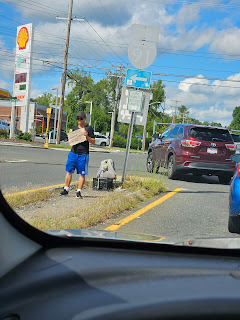Why and What is Photojournalism?
Why is it Important to Know Photojournalism's History?
What are the merits of understanding the history of photojournalism and why it is used?
Photojournalism is a medium through which to understand history and current events. It has helped bring issues to the forefront that people might not typically run across or have much reason to think about in their daily life. As a result, studying the history of photojournalism as well as what subjects photojournalists of the past chose to focus on in their time period helps to hone in on what issues they thought were most important at the time. The importance of this is highlighted in Marcus Garvey's quote, "A people without the knowledge of their past history, origin and culture is like a tree without roots", which lends itself to photojournalism because it seeks to expose people to their history, origin, and culture, especially when they might be ignorant of certain aspects of it.
What is an example of an instance photojournalism has made an impact by bringing awareness to an issue?
An example of impactful photojournalism is the "Migrant Mother" photo by Dorothea Lange. It is an iconic photo often used in American history textbooks to capture the hardship and stress of the Great Depression in image form. It also encapsulates Paul Almasy's quote, where he states that "As
a photographer my main interest is in people and the "human condition",
which I try to portray without any concessions… A photojournalist is something of an
historian, and an historian must never lie". Despite some disputes over the exact events that transpired when Lange took the photograph, it does indeed not lie about the hardships of the Great Depression, and does not shy away from the reality of the toll it took on people.
Photojournalism and Not-Photojournalism
 |
| Photo by Madeline Jacyszn, 9/12/23 |
In the clip from the movie "War Photographer", James Nachtwey states that a goal of photojournalism is to "reach out and grab [people], and make them stop what they're doing and pay attention to what is going on... and shake people out of their indifference." I believe this photo qualifies as photojournalism by accomplishing that. Seeing homeless people at intersections is, unfortunately, no longer an uncommon site, which combined with the distractions of daily life, makes it easy to start to gloss over them. This photo is intended to catch the viewer when they no longer have that preoccupation of their life to distract them, so they really are forced to see the growing homeless population and consider why more and more people are being put into that situation. In other words, it's intended to "shake people out of their indifference".
 |
| Photo by Madeline Jacyszn, 9/12/23 |
An Example that's Not Photojournalism:
In his video "What is Photojournalism?", Professor Nordell specifically highlighted that the difference between photojournalism and what's not photojournalism was taking pictures of "verbs" as opposed to "nouns". "Verbs" are associated with news as it is people doing things, while "nouns" are just the subject, devoid or with minimal action. This picture of my dog, as cute as she is, is of a noun. The focus of the photo is of how adorable my dog is as opposed to any action, which makes it completely empty of any journalism or journalistic intent as per Professor Nordell's definition of photojournalism. There could, in theory, be an argument that potential context could be added to the photo to make it either photojournalism or closer to photojournalism, but by itself, my dog is not photojournalism.
Personal Reflection
I want to learn more about the history of photojournalism because not only do I run across it often in my history classes, but it's also useful to me when I research other countries for personal projects. In the case of my history classes, I've seen it used when the teacher or the textbook wants to showcase particularly striking images that portray the time period, most often times of hardship like the Great Depression or poverty. It is quite fascinating to me how photojournalists choose what subjects they want to focus on and their reasoning why, especially if their chosen subjects are in difficult areas. For a personal aspect, photojournalism has been quite useful for my personal research. The nature of the projects I'm working on demands photo reference, since textual descriptions only can go so far, which has given me a deeper appreciation of photojournalism and that people are willing to go out and share these photographs about these particular differing cultural subjects.
My news diet is mainly consumed through social media and YouTube, and most of the photojournalism I happen to run across in my daily life is actually from social media. I believe it's important for me to keep track of social and political issues, even if I'm not particularly invested in them, and also the changes in the online space. In particular I pay attention to news pertaining to changes in YouTube itself, since I rely on YouTube not only for my news but for a majority of my entertainment, so changes in YouTube can affect both.

Comments
Post a Comment